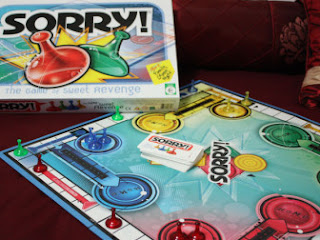Advertisement
Understanding board game jargons is not very complicated. So for most who had been playing boardgames for quite a while, this could appear to be a remedial. However for those who consider themselves a newcomer, the following terms can be be extremely helpful. You don't have to memorize this. Once you understand about these terms, and possess encountered them in the game, you will definately get the grip. (Note: every board game has jargons of their very own however, these will be the generalized terms which might be simple and easy apply to almost all.)
Game Board -- or commonly referred to as "board" will be the surface (usually quadrilateral) where the game is played. Of all games, the board used is unchanging or standardized but others use tiles or cards which allow layout, design in the game to improve since the game progresses or depending on the agreement from the players prior to game starts.
Environment -- is essentially the game board or perhaps the board where the game is played. The term is employed interchangeably with game board. Environment also is a tabletop, a score sheet or something different. You'll find randomized environment like the one suited for Settlers of Catan, abstract environment just like the chess board, evolving environment as with Carcassonne and representative environment similar to Euro boards and others.
Tokens (or pegs or pieces or counters or bits) -- will be the game pieces that represent the gamer about the game board. The amount of tokens utilized by a gamer may vary based on the game. In chess, 16 tokens or pieces are widely-used at the beginning of the action, each having its own designations and capabilities inside limits in the game. Other games for example the classic Snakes and Ladders just use one token to represent the ball player; while some employ additional pieces because game progresses. Some games have tokens that aren't sent to a selected player.
Jump -- is always to bypass another player's piece. Based on the game, a jump may involve capturing the overall game part of a rival or simply, bypassing it.
Space -- can be a physical unit about the board enclosed by a certain border. It's also when a game piece is positioned. On most games, tokens are positioned from the areas delimited by the grid line (like Chess); while in other games, the tokens are put on intersection of lines around the grid (Go).
Randomizers -- are components of the action that exist outside the board or the environment, which introduce luck in to the game. The commonest randomizers are dice and spinners. Cards and tiles will also be regarded as randomizers.
Markers -- are another elements of the sport that reside outside the board or perhaps the environment. Markers are employed to monitor important details amongst gamers like the score, quantity, trade plus much more.
No player elimination -- is a manifestation of the overall game that aims to keep every one of the players 'till the end. This is a distinct manifestation of German-style games. Specific mechanics like scoring at the conclusion of the action or hidden points are built to maintain your players following the overall game.
Hex -- is used being a common term to denote space on the hexagonal-based board game. This really is frequently utilized on board wargames even though some abstract strategy games like Abalone use hexagonal layout.





Post a Comment